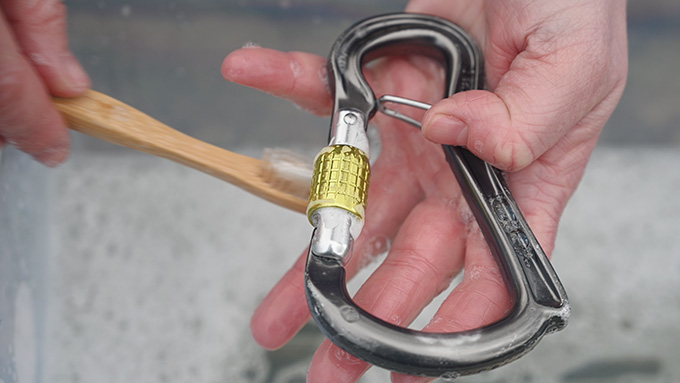A Guide to Cleaning and Maintaining Arborist Carabiners
Climbing carabiners are essential tools for climbers, providing a crucial link in the safety chain during rock climbing and mountaineering activities. Regular cleaning and maintenance of carabiners are essential to ensure their optimal performance and longevity. In this guide, we'll discuss the importance of cleaning carabiners and provide step-by-step instructions on how to keep them in top condition.
Why Clean Carabiners?
Over time, carabiners can accumulate dirt, sand, and other debris that may compromise their functionality. Additionally, exposure to the elements, such as rain, saltwater, and even sweat, can lead to corrosion and wear. Regular cleaning helps remove these contaminants, preventing potential safety hazards and extending the lifespan of your climbing gear.
Materials Needed:
- Mild soap or specialized carabiner cleaner
- Soft brush or toothbrush
- Warm water
- Microfiber or lint-free cloth
- Lubricant (non-petroleum-based)
- Carabiner maintenance kit (optional)
Step-by-Step Cleaning Process:
Before cleaning: carefully inspect each carabiner for any signs of damage, cracks, or excessive wear. If you find any compromised carabiners, it's crucial to retire them from use immediately.
Remove Excess Dirt: Use a soft brush or toothbrush to gently remove any loose dirt, sand, or debris from the carabiner. Be thorough, paying attention to areas around the gate and locking mechanism.
Prepare Soapy Water: Fill a basin or sink with warm water and add a small amount of mild soap or a specialized carabiner cleaner. Avoid using harsh chemicals or solvents, as they may damage the carabiner's finish.
Soak and Agitate: Submerge the carabiners in the soapy water and agitate them gently. Allow them to soak for a few minutes to help loosen any stubborn grime.
Brush and Scrub: Use the soft brush or toothbrush to scrub the carabiners, paying particular attention to the gate, hinge, and any hard-to-reach areas.
Rinse Thoroughly: Rinse the carabiners with clean, warm water to remove any soap residue. Ensure that all traces of soap are washed away, as residue can attract dirt and compromise the carabiner's performance.
Dry Completely: Pat the carabiners dry with a microfiber or lint-free cloth. Make sure they are completely dry before storing or using them to prevent corrosion.
Lubricate Moving Parts: Apply a small amount of non-petroleum-based lubricant (Preferably duck oil) to the hinge and moving parts of the carabiner. This helps maintain smooth operation and prevents rust or corrosion.
After cleaning and lubricating: inspect each carabiner again for any issues. Test the gate and locking mechanism to ensure they function correctly.
Store Properly: Store your carabiners in a cool, dry place away from direct sunlight. Avoid leaving them in damp conditions or exposed to extreme temperatures.
Conclusion:
Regularly cleaning and maintaining your climbing carabiners is a crucial aspect of responsible climbing. By following these simple steps, you can ensure the longevity and reliability of your gear, contributing to a safer and more enjoyable climbing experience. Remember, a well-maintained carabiner is not only a key element in your safety system but also a reflection of your commitment to responsible climbing practices






